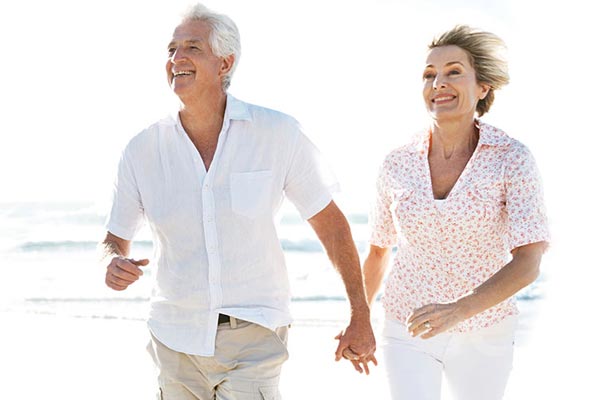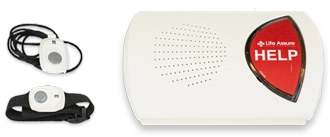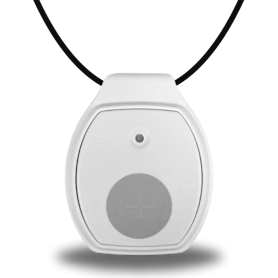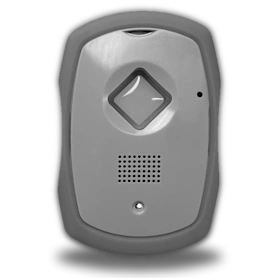Fall Prevention Month
Fall Prevention Month In Canada: A Vital Reminder To Protect Our Seniors
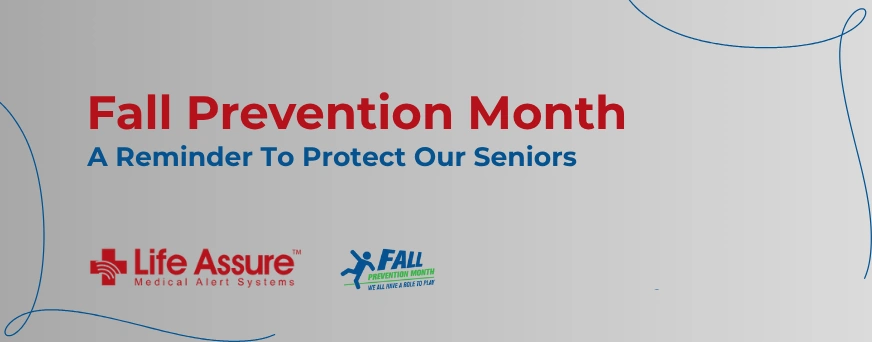
Every November, Fall Prevention Month is observed across Canada to bring attention to a serious and growing issue - fall related injuries among older adults. As Canada’s senior population steadily increases, the health risks associated with falls are becoming a national concern. These injuries are not just accidents, they are often preventable events with devastating consequences. Through awareness and education, Fall Prevention Month highlights the importance of taking proactive steps to reduce the risk of falls and protect our aging population.
Falls: A Leading Cause Of Injury Among Seniors
Falls are the leading cause of injury-related hospitalizations and deaths among Canadians aged 65 and older. According to the Public Health Agency of Canada, 5.8% of seniors reported suffering a fall injury within a 12-month period between 2017 and 2018. While that percentage may seem small, it represents a large number of people experiencing potentially life-altering or fatal injuries.
In 2018 alone, over 424,000 emergency department visits were recorded for fall-related injuries among older adults. Of these, more than 132,000 involved individuals aged 85 and above. That same year, falls resulted in nearly 95,000 hospitalizations and over 28,000 cases of long term disability. Alarmingly, falls accounted for 4,849 deaths among adults aged 65 and older.
The Trend Is Getting Worse
The situation is becoming increasingly serious. Over the past decade, the rate of fall related emergency department visits increased from 58 to 64 per 1,000 older adults. Mortality rates due to falls rose to 85 per 100,000 in 2019. Meanwhile, fall related hospitalizations have remained high and stable at 15 per 1,000 seniors.
As Canadians continue to live longer, the number of fall-related incidents is expected to grow. Adults aged 85 and older face the greatest risk across all injury categories, including hospitalizations, emergency department visits, disabilities, and fatalities. These trends reflect a critical need for ongoing education, preventive strategies, and support services.
The Real-Life Impact Of Falls
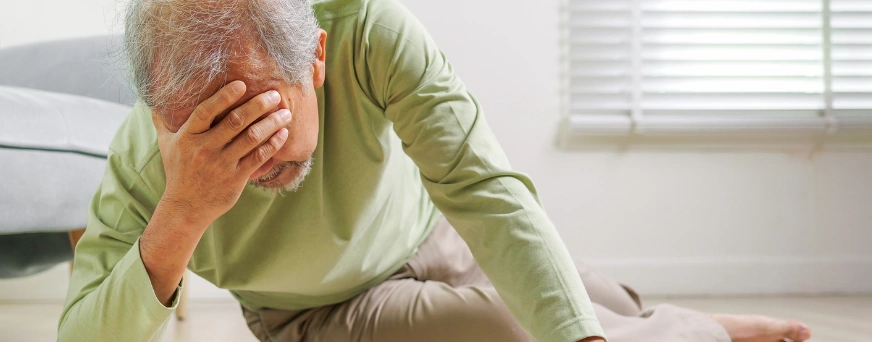
A fall can change a senior’s life in an instant. Many older adults who fall experience serious complications, such as hip fractures, head injuries, or internal bleeding. These injuries often lead to long term loss of mobility, independence, and confidence.
Four out of five emergency department visits involving seniors are the result of falls. For those aged 85 and older, one-third are admitted to the hospital after a fall. Recovery can be lengthy, and in many cases, a fall may lead to a permanent shift in living arrangements - from independent living to assisted care or long term care facilities.
Understanding Why Falls Happen: Common Causes and Risk Factors for Older Adults
Falls don’t just happen by chance, they are often the result of a combination of factors that can be identified and addressed. By understanding the most common causes and risk factors, older adults and their families can take meaningful steps to reduce the risk of falling and maintain independence.
What Increases Fall Risk?
-
Muscle Weakness and Balance Issues: As we age, muscles naturally lose strength and flexibility, making it harder to stay steady on our feet.
-
Vision and Hearing Changes: Difficulty seeing obstacles or hearing warning sounds can make it easier to trip or lose balance.
-
Medication Side Effects: Some medications or combinations, especially those for blood pressure, sleep, or mood, can cause dizziness, drowsiness, or drops in blood pressure.
-
Chronic Health Conditions: Conditions like arthritis, diabetes, Parkinson’s disease, and heart problems can affect mobility, sensation, or balance.
-
Footwear and Foot Problems: Ill-fitting shoes, slippery soles, or foot pain can increase the risk of slipping or stumbling.
-
Home Hazards: Cluttered walkways, poor lighting, loose rugs, and lack of handrails are common environmental risks.
-
Low Blood Pressure or Dehydration: Sudden drops in blood pressure or not drinking enough fluids can lead to fainting or weakness.
Falls Are Not A Normal Part Of Aging
It’s important to remember: while the risk of falling does increase as we get older, falling is not an inevitable part of aging. Many falls can be prevented by recognizing personal risk factors and making simple changes at home and in daily routines.
Taking the time to assess your environment, talk with your healthcare provider, and stay active can make a significant difference. By being proactive, older adults can continue to enjoy independence and peace of mind, knowing they’re taking steps to stay safe.
Why Fall Prevention Month Matters
Fall Prevention Month plays a key role in addressing these risks by raising awareness and promoting action. It encourages older adults, caregivers, healthcare providers, and communities to work together in reducing fall risks. Simple interventions such as improving lighting at home, removing tripping hazards, using assistive devices, and encouraging safe physical activity, can make a significant difference.
The month also fosters collaboration among public health officials, medical professionals, and community organizations. By sharing resources, conducting screenings, and offering fall prevention programs, these groups help empower seniors to live more safely and independently.
Taking Action: Small Steps, Big Impact
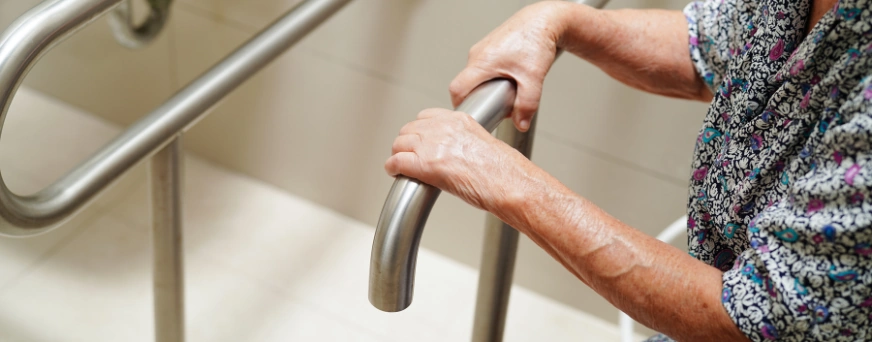
Preventing falls doesn’t require a complete lifestyle overhaul. In fact, some of the most effective fall prevention strategies are simple, affordable, and easy to implement. By making a few thoughtful adjustments at home and adopting healthy habits, older adults can significantly reduce their risk of falling.
Make Your Home A Safer Space
Many falls happen right at home, where we often feel the most secure. Seniors and caregivers should take the time to identify and address common household hazards. Here are some key ways to make your living environment safer:
-
Remove tripping hazards: Get rid of loose rugs, electrical cords, or clutter in walking areas. Keep floors clear and tidy.
-
Improve lighting: Install bright, energy efficient bulbs in all rooms, hallways, and staircases. Use night lights in bedrooms and bathrooms.
-
Secure stairways: Add sturdy handrails on both sides of stairs. Make sure steps are even and clearly visible, consider using contrasting tape on the edge of each stair.
-
Add grab bars and non-slip surfaces: Place grab bars in bathrooms near toilets and inside showers or tubs. Use non-slip mats in the shower and kitchen.
-
Rearrange furniture: Ensure that furniture is easy to navigate around and provides adequate space for movement, especially if using a walker or cane.
-
Keep frequently used items within reach: Avoid the need to use stools or step ladders by placing essentials at waist or shoulder height.
Build Strength and Improve Balance
Physical activity is one of the most effective ways to prevent falls. It helps improve balance, flexibility, muscle strength, and coordination, all of which decline with age if not maintained.
Seniors should aim for regular movement, even if they have limited mobility. Here are some low-impact exercises that can make a big difference:
-
Seated leg lifts: While sitting in a sturdy chair, straighten one leg and hold for a few seconds before lowering. Repeat several times for each leg.
-
Heel-to-toe walking: Walk in a straight line, placing the heel of one foot directly in front of the toes of the other. This improves balance and gait stability.
-
Sit-to-stand exercises: Practice standing up from a seated position without using your hands. This strengthens leg muscles and supports better mobility.
-
Side leg raises: While holding a chair for balance, lift one leg out to the side and return. This works the hips and thighs.
-
Gentle stretches and yoga: Simple stretching routines or senior friendly yoga classes help with flexibility and coordination.
Always consult a doctor or physical therapist before beginning a new exercise routine, especially if there are pre-existing health concerns.
Check Your Health Regularly
In addition to physical activity and home modifications, several health-related factors can influence fall risk. Staying on top of your medical needs is just as important:
-
Get regular vision and hearing checks: Poor eyesight or hearing can affect balance and spatial awareness.
-
Review medications with your doctor: Some drugs or combinations of medications can cause dizziness or drowsiness.
-
Wear proper footwear: Choose shoes that fit well, have non-slip soles, and provide good support. Avoid slippers and high heels.
-
Stay hydrated and eat well: Dehydration or poor nutrition can lead to weakness and fainting, increasing the risk of falls.
Stay Connected And Ask For Help
Finally, don't underestimate the value of community and support. Caregivers and family members should maintain regular check-ins, help identify risks, and encourage older adults to speak up if they feel unsteady or have experienced a fall.
There are many community programs, senior centers, and health clinics across Canada that offer fall prevention workshops, home safety assessments, and exercise classes tailored to older adults. Taking advantage of these resources can provide both peace of mind and practical tools to stay safe.
A Safer Future Starts Now
Fall Prevention Month is a reminder that a safer home and a stronger body can help seniors maintain independence and avoid serious injury. The steps may be small, but their impact is lasting. With awareness, preparation, and a little support, older Canadians can confidently move through life safely and securely.
Conclusion
Falls are not an inevitable part of aging, they are largely preventable. Fall Prevention Month serves as a crucial reminder of the steps we can all take to help reduce the risk of falls among older adults. With greater awareness and community involvement, Canadians can work together to keep seniors safe, healthy, and independent for as long as possible.

Share Our Fall Prevention Month Infographic
Sources:
● Public Health Agency of Canada. “Surveillance Report on Falls Among Older Adults in Canada.” Canada.ca, 20 Feb. 2024, www.canada.ca/en/public-health/services/publications/healthy-living/surveillance-report-falls-older-adults-canada.html. ● The Human Cost of Injury – Parachute. www.parachute.ca/en/professional-resource/cost-of-injury-in-canada/the-human-cost-of-injury. ● Public Health Agency of Canada. “Injury Hospitalizations in Canada 2018/19.” Canada.ca, 11 Sept. 2020, www.canada.ca/en/public-health/services/reports-publications/health-promotion-chronic-disease-prevention-canada-research-policy-practice/vol-40-no-9-2020/injury-hospitalizations-canada-2018-2019.html.Resources For Seniors
For Fall Prevention Tips

Fall Prevention Month Canada is a resource offering tools, tips, and educational materials to help seniors reduce their risk of falls and stay safe.
Website: www.fallpreventionmonth.ca
Email: info@parachute.ca
About Life Assure
How A Medical Alert Can
Help During An Emergency
 Get Help With The Push Of A Button
Get Help With The Push Of A Button
 24/7 Monitoring Anywhere In Canada
24/7 Monitoring Anywhere In Canada
 Usable In The Rain Or Shower
Usable In The Rain Or Shower
 Automatic Fall Detection Available
Automatic Fall Detection Available



